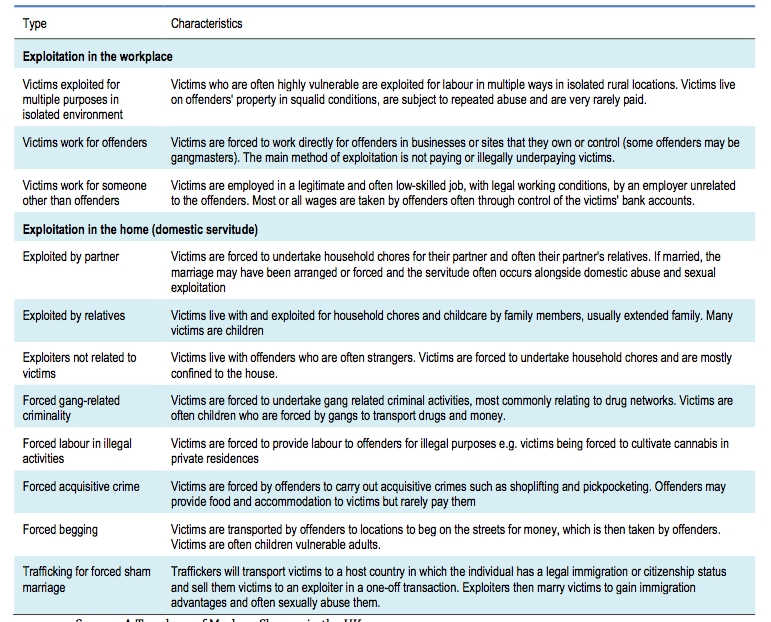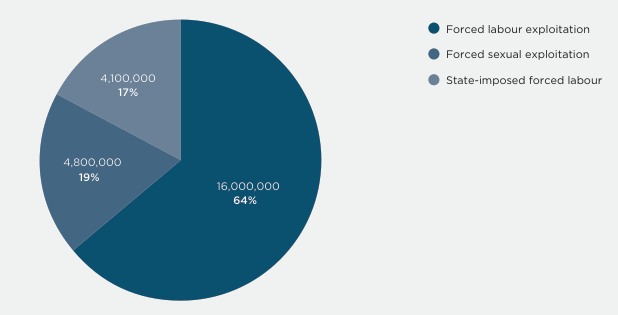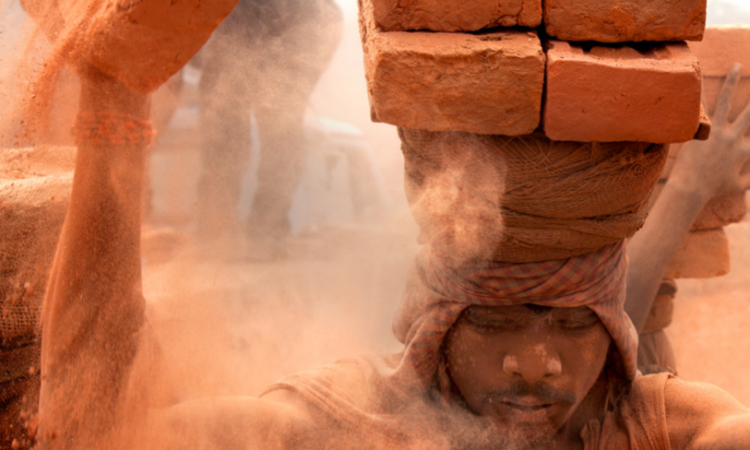Forced labour, as set out in ILO Forced Labour Convention, 1930 (No.29),16 refers to “all work or service which is exacted from any person under the menace of any penalty and for which the said person has not offered himself voluntarily”. Men, women, and children are forced to work in various settings across the globe, with examples of forced labour found in garment making in South Asian factories, digging for minerals in African mines, harvesting tomatoes on North American farms, working as domestic workers in East Asian homes, working on farms in Latin America, begging in European cities, and constructing high rise buildings in the Gulf States, among other sectors and geographic areas. Regardless of the setting, an identifying feature of situations of forced labour is lack of voluntariness in taking the job or accepting the working conditions, and the application of a penalty or a threat of a penalty to prevent an individual from leaving a situation or otherwise to compel work. Coercion can take many forms, ranging from physical and sexual violence or threats against family members to more subtle means such as withholding of wages, retaining identity documents, threats of dismissal, and threats of denunciation to authorities.
Forced labour affects millions of men, women and children around the world and is the most extreme form of people exploitation. It is most often found in industries with a lot of workers and little regulation. These include:
- Agriculture and fishing
- Domestic work
- Construction, mining, quarrying and brick kilns
- Manufacturing, processing and packaging
- Prostitution and sexual exploitation
- Market trading and illegal activities
Although many people associate forced labour and slavery with physical violence, in fact the ways used to force people to work are more insidious and ingrained in some cultures.
Types and characteristics of forced labour

Forced labour often affects the most vulnerable and excluded groups, for example commonly discriminated Dalits in India. Women and girls are more at risk than boys and men, and children make up a quarter of people in forced labour.
Migrant workers are targeted because they often don’t speak the language, have few friends, have limited rights and depend on their employers.
Forced labour happens in the context of poverty, lack of sustainable jobs and education, as well as a weak rule of law, corruption and an economy dependent on cheap labour.
Forced labour: Number and percentage distribution of victims of forced labour, by sub-category

An estimated 24.9 million persons were victims of forced labour in 2016
Among the 24.9 million people in any form of forced labour, 16 million were victims of forced labour exploitation in economic activities such as agriculture, construction, domestic work, and manufacturing, 4.8 million were victims of forced sexual exploitation, and 4.1 million were victims of forced labour imposed by state authorities.
A significant share of victims of forced labour were exploited outside their country of residence
Almost one of every four victims of forced labour were exploited outside their country of residence. As illustrated in Figure 8, victims of forced sexual exploitation appear most likely to have been exploited outside their country of residence, while, not surprisingly, almost all forced labour imposed by state authorities took place within the borders of their own countries. It should be noted, however, that these differences by typology were driven in part by the differences in the data sources used for measuring them.
The large share of victims exploited outside their country of residence points to the high degree of risk associated with migration in the modern world, particularly for migrant women and children, who are likely to be the most vulnerable. The fight against modern slavery is thus integrally related to global initiatives to promote orderly, safe, and regular migration, such as the global compact for safe, orderly and regular migration.
99% of modern slavery victims were exploited in a country in the same income-based regional grouping as their country of residence
Poverty is often cited as an important risk factor for modern slavery, and relative wealth disparities between countries are often cited as a pull factor. While poverty can drive a decision to migrate for labour, it can also act as a barrier to migration, as members of the poorest groups are of- ten unable to raise the money required to reach their destination, whether through accessing loans in their local communities or from others in the migration industry. But to date there has been limited empirical data providing insight into the connection between income levels and forced labour movements. To explore this issue, the estimates of victims of forced labour were examined according to the income levels of the victims’ country of residence and of the country where the exploitation took place. The results suggest very little movement across income groupings. Ninety-four per cent of victims of forced labour were exploited in a country that was in the same income-based regional grouping as their country of residence. People who were exploited in the low- and lower-middle-income groupings were almost exclusively residents of countries that were in the same income grouping.
IMAGE CREDIT: ILO / Lisa Kristine

